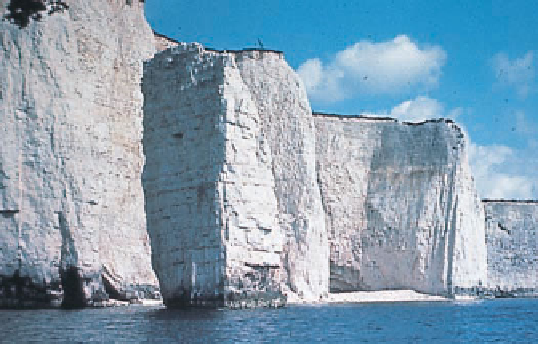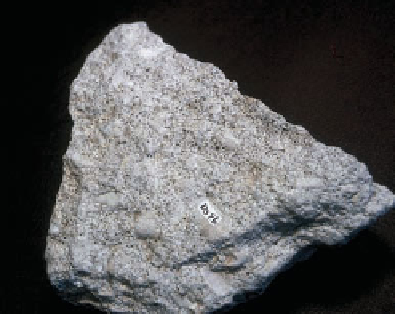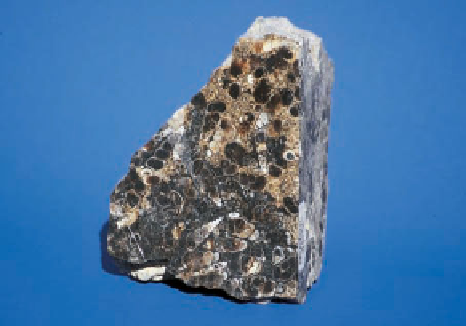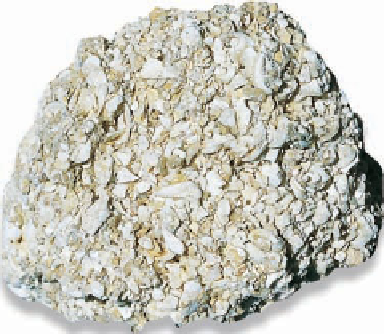Geology Reference
In-Depth Information
◗
Figure 6.20
Varieties of Limestone
a
Limestone with numerous fossil shells.
b
The rock in these sea cliffs in Denmark is chalk, a type of limestone
consisting of microscopic shells.
d
This limestone is made up partly of ooids (see inset),
which are rather spherical grains of calcium carbonate.
c
Coquina is limestone composed of broken shells.
chalk is a soft variety of limestone made up mostly of micro-
scopic shells (Figure 6.20b). One distinctive variety of lime-
stone contains small spherical grains called
ooids
that have
a small nucleus around which concentric layers of calcite
precipitated (Figure 20d). Lithifi ed deposits of ooids form
oolitic limestones.
Dolostone is similar to limestone, but most or all of it
formed secondarily by the alteration of limestone. The con-
sensus among geologists is that dolostone originates when
magnesium replaces some of the calcium in calcite, thereby
converting calcite to dolomite.
Some of the dissolved substances derived by chemi-
cal weathering precipitate from evaporating water and
thus form chemical sedimentary rocks known as
evapo-
rites
(Table 6.2).
Rock salt
, composed of halite (NaCl),
and
rock gypsum
(CaSO
4
•
2H
2
O) are the most common
(
as Michigan, Ohio, New York, the Gulf Coast region, and
Saskatchewan, Canada.
Chert
is a hard rock composed of microscopic crystals of
quartz (Table 6.2 and Figure 6.21c). Some of the color vari-
eties of chert are
fl int
, which is black because of inclusions of
organic matter, and
jasper
, which is colored red or brown by
iron oxides. Because chert is hard and lacks cleavage, it can
be shaped to form sharp cutting edges, so it has been used
to manufacture tools, spear points, and arrowheads. Chert is
found as irregular masses or
nodules
in other rocks, especially
limestone, and as distinct layers of
bedded chert
made up of
tiny shells of silica-secreting organisms.
Coal
consists of compressed, altered remains of land
plants, but it is nevertheless a biochemical sedimentary rock
(Figure 6.21d). It forms in swamps and bogs where the water
is oxygen deficient or where organic matter accumulates
faster than it decomposes. In oxygen-defi cient swamps and
bogs, the bacteria that decompose vegetation can live with-
out oxygen, but their wastes must be oxidized, and because
little or no oxygen is present, wastes accumulate and kill the
◗
Figure 6.21a, b), although several others are known and
some are important resources. Compared with mudrocks,
sandstone, and limestone, evaporites are not very com-
mon, but nevertheless are signifi cant deposits in areas such









Search WWH ::

Custom Search